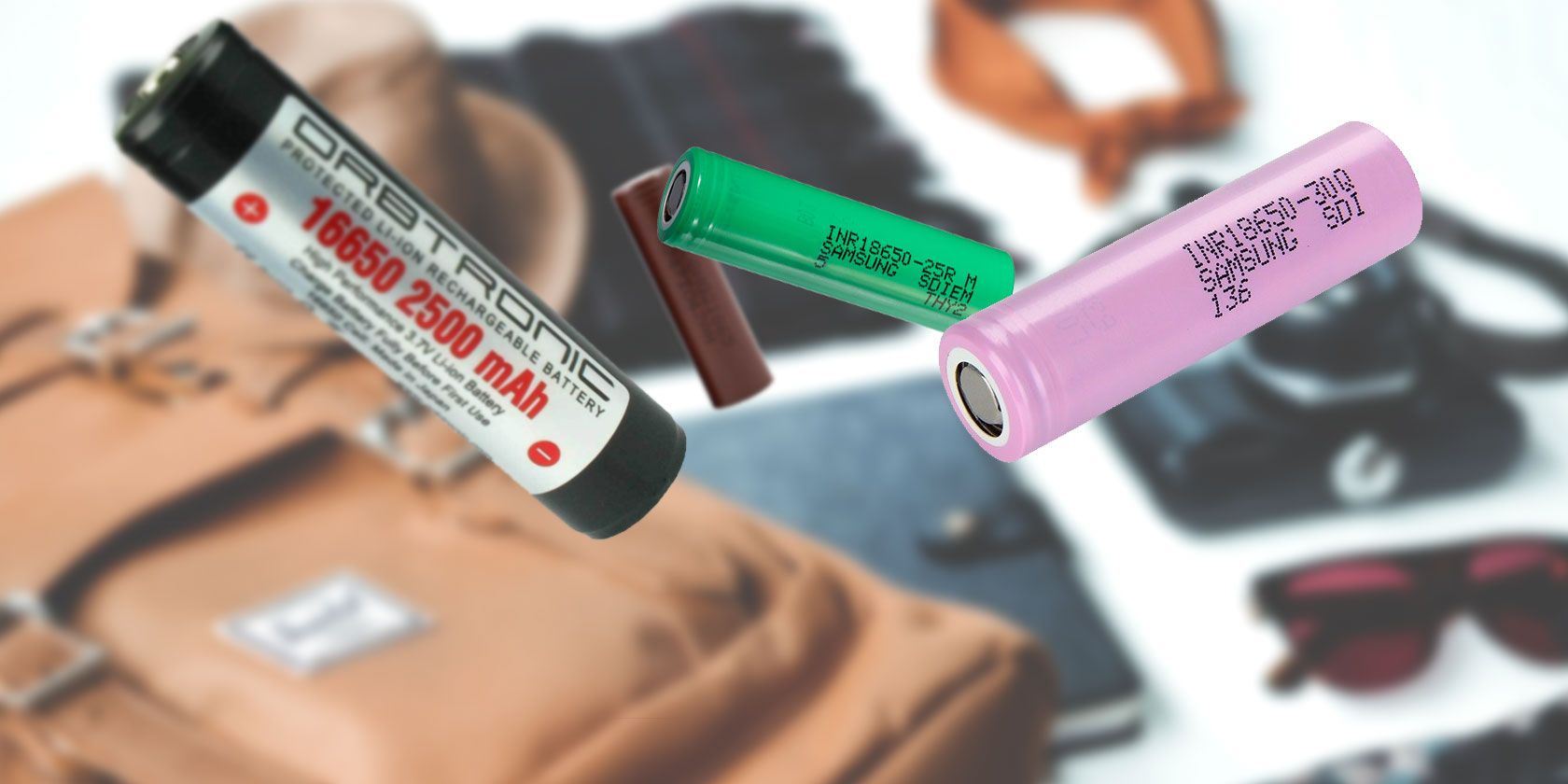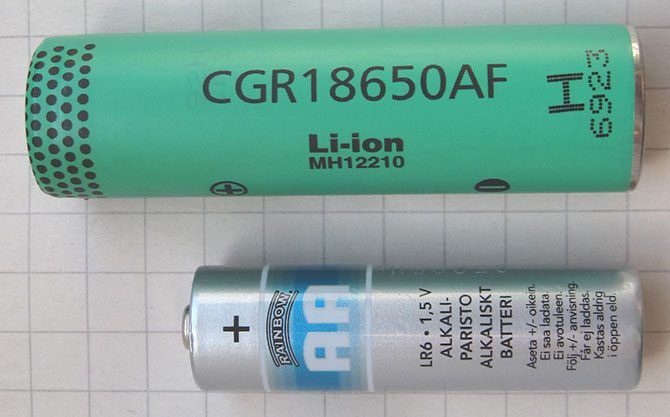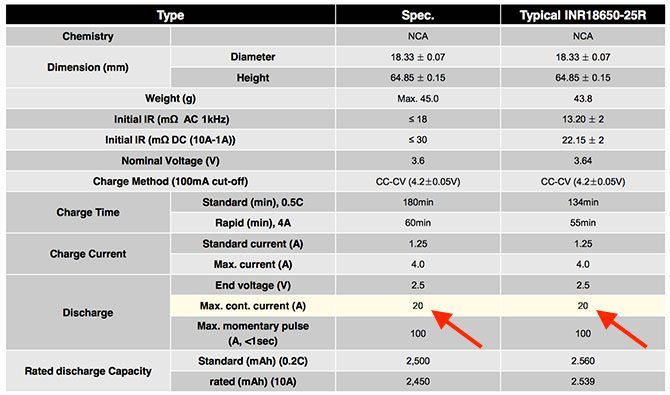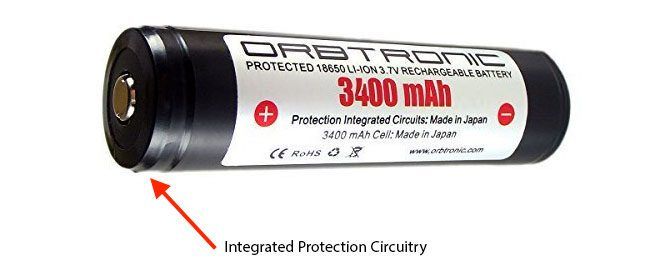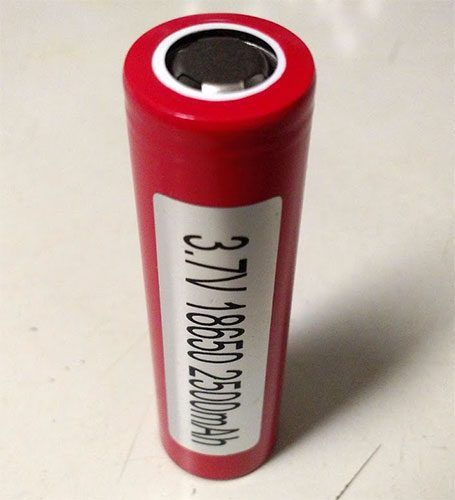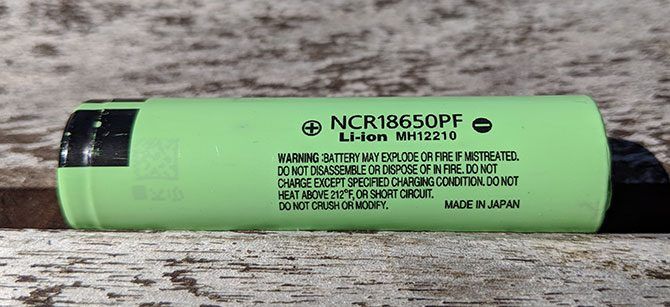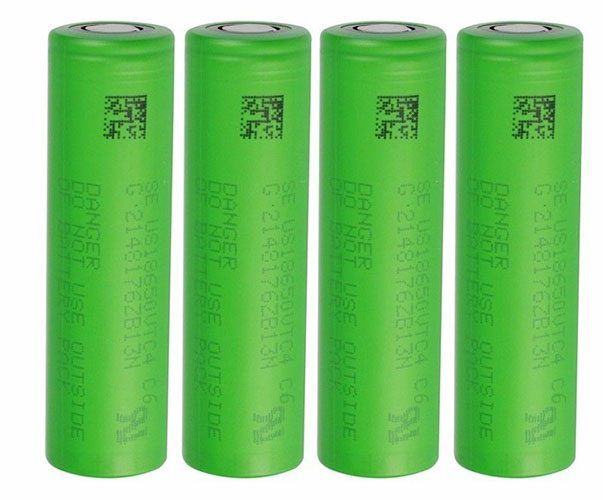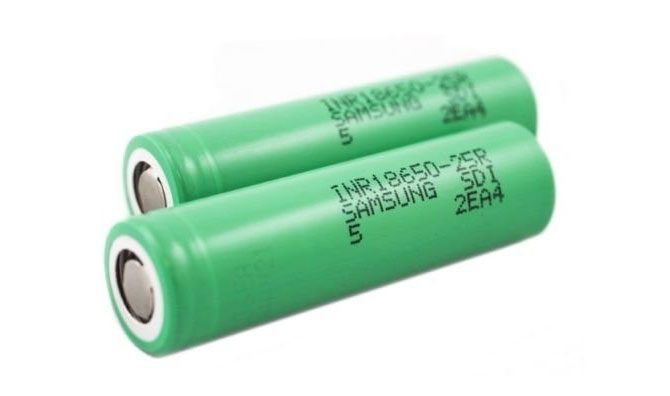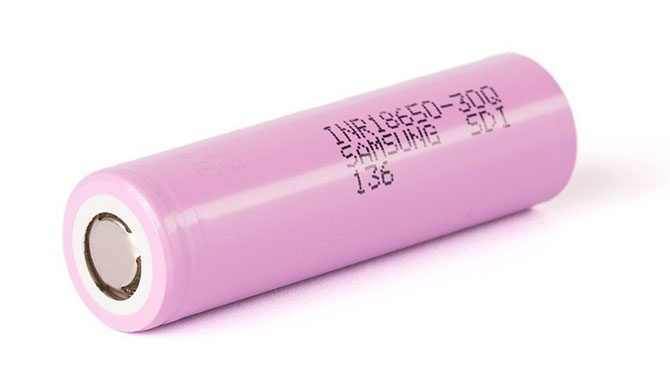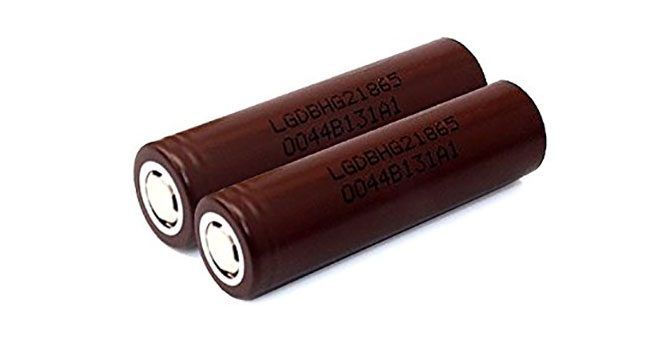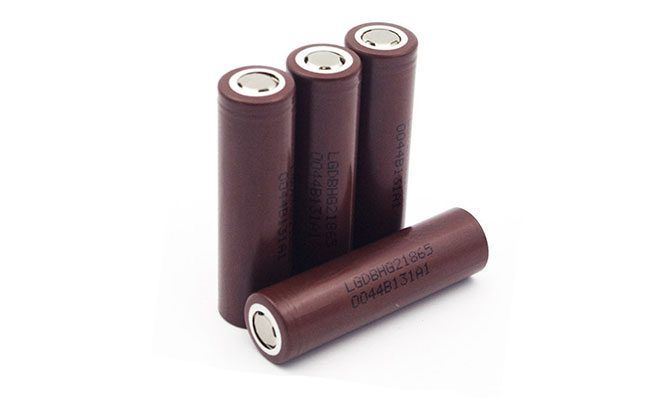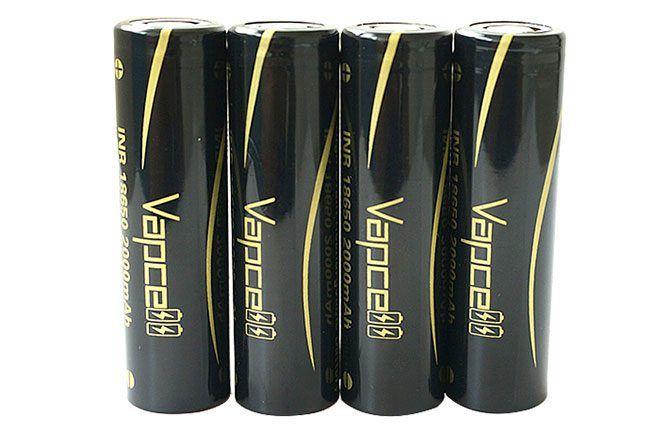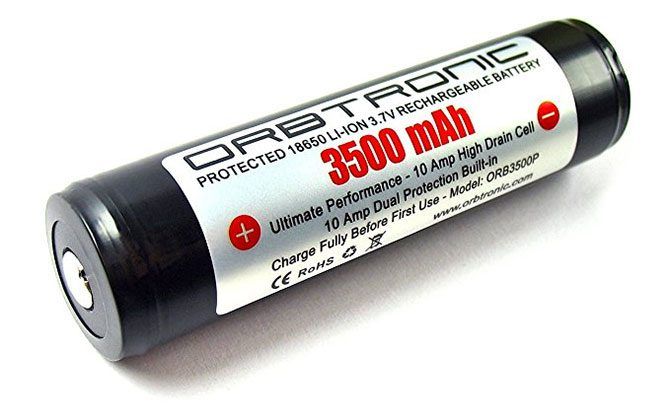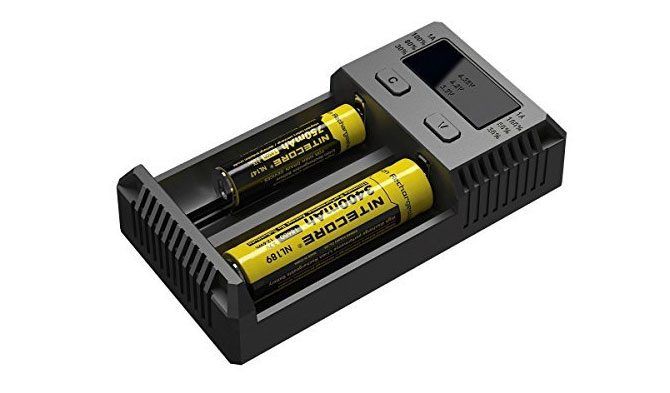The 18650 is a type of rechargeable lithium-ion battery. Lithium-ion batteries have revolutionized portable devices. They're in everything, from our smartphones and cameras to baby monitors, fitness gadgets, and flashlights.
As battery technology has matured, cells, like the 18650, that were once reserved for device manufacturers, have found their way into consumer hands. However, these new lithium cells have not been standardized quite like the rechargeable AAs you'll find in the supermarket.
You have to make sure you buy the right 18650 battery for the job, and you'll need to know how to avoid fake batteries.
What Is an 18650 Battery?
An 18650 battery is a cell that's 18mm x 65mm in size. The name, 18650, refers exclusively to the size of the lithium-ion battery cell, but there can be minor variations even here. The 18650 has become the new gold standard for replaceable and rechargeable batteries.
They offer the performance of a lithium-ion cell, a capacity in the range of 1800mAh to around 3500mAh, and an output of 3.7 volts. They're used in a huge range of devices from laptops to laser pointers, and camera accessories like gimbals and sliders.
The 18650 cell offers the best performance of any consumer-grade rechargeable battery. They're not susceptible to damage from charging before being fully discharged (as was the case with the old nickel cadmium cells), though they'll degrade at about the same rate as your smartphone battery.
You can't simply buy a 18650 battery off the shelf by looking at the capacity (measured in milliamp hours or mAh) alone. The right battery depends entirely on what you're using it for.
Choosing the Right 18650 Battery for the Job
The 18650 isn't a standardized cell. They're not all built equally, or with the same task in mind. The most important trait to consider when looking at 18650 batteries is the continuous discharge rating (CDR), also known as amperage capacity.
The CDR is the rate at which current---measured in amps (A)---can be pulled from the battery without it overheating. In order to find out which battery is right for you, you'll need to match the CDR of the battery with the power draw associated with your device.
If you pick the wrong battery, the cells will get too hot. Heat will damage the battery, reducing its overall lifespan. Overheating may even cause the cells to explode, leak, or damage your device.
Fortunately there's a direct relation between CDR (A) and battery capacity (mAh). The higher the capacity, the lower the CDR. That means devices that draw less power can take advantage of higher-capacity cells. Hungrier devices will need to use lower-capacity cells in order to safely draw more current.
At the time of writing (June 2018), the current maximum CDR attainable in an 18650 battery is 38A at 2000mAh. Some bogus manufacturers claim ratings of 40A, or 35A at 3000mAh or greater, but these are not trustworthy ratings. Battery technology evolves constantly, so expect this to change.
Protected vs. Unprotected Batteries
When shopping for 18650 batteries, you will have a choice between protected and unprotected cells. Protected cells, as the name might suggest, have a small electronic circuit integrated into the battery packaging. This is located one end of the battery, and is indistinguishable from the cell itself.
This circuit protects the battery against dangers like excessive charging and discharging, short circuiting, and extreme temperatures. This is designed to protect the devices you use them in, and to prevent damage from explosion or leaking.
Many protected batteries also have a valve which disables the cell permanently if the pressure becomes too high inside the cell. This is commonly what happens when batteries swell, at which point they're more susceptible to igniting.
Unprotected batteries lack this circuitry. They're cheaper as a result, and also more prone to the problems that such protections are designed to avoid. If you choose an unprotected cell (and many of the best cells are unprotected), you should take extra care when choosing and using your batteries.
Pay special attention to the discharge rating (CDR) to ensure you're not drawing excessive power from a cell, or it may overheat. You also need to keep the contacts covered, ideally in a plastic case so the batteries don't short in your bag or pocket. You'll also need to make sure you don't leave your batteries in the charger too long.
When in doubt, go the protected route and spend a bit more.
Flat Top vs. Button Top
To really demonstrate how non-standardized the 18650 battery is, there are two slight variations in size: flat top and button top. This relates to the contacts, specifically the positive contact. Button top batteries will protrude slightly, whereas flat top batteries sit perfectly flush.
These extra few millimeters can be the difference between a battery that fits and a battery that doesn't. If in doubt, look at the existing batteries that came with your device, consult a manual, or contact the manufacturer. For spring-loaded batteries, like flashlights, it shouldn't make a huge difference.
How to Avoid Fake 18650 Batteries
Like any branded product, you've got to beware of the fakes. It's common for many vendors to buy up cheap cells, rewrap them as name brands, and sell them through Amazon or eBay as genuine items.
Not only is this a waste of your money, it's potentially dangerous. If you buy a battery for a high-powered device believing it to have an adequately safe CDR, you could injure yourself or damage your device when the battery turns out to have an entirely different rating.
Battery scammers are good at what they do. A genuine battery and a fake are incredibly difficult to tell apart. From the wrapping, to the branding, to the online listings---they look like the real deal. The only way you can tell a fake from a genuine battery is by weight.
Most brands have made the weight of their genuine batteries available somewhere. You should cross-reference any batteries you buy online with the manufacturer's specification. Even spelling mistakes don't indicate a fake, as one genuine manufacturer had to point out via a Facebook update.
To check a particular cell, try searching the internet for its name followed by "datasheet." This will list the battery weight, capacity and maximum CDR.
The Best 18650 Batteries
The best batteries are generally produced by Sony, Samsung, LG and Panasonic/Sanyo. That doesn't mean all other brands are untrustworthy, but these brands provide reliable and trustworthy CDR ratings and enough information for you to spot fakes.
1. Sony VTC5A (Datasheet)
CDR/Capacity: 35A/2600mAh
Weight: 47.1g (variation of 1.5g)
Buy: Sony VTC5A on IMRBatteries
2. Sony VTC6 (Datasheet)
CDR/Capacity: 15A/3000mAh
Weight: 46.5g average
Buy: Sony VTC6 on IMRBatteries
3. Samsung 25R (Datasheet)
CDR/Capacity: 20A/2600mAh
Weight: 43.8g average
Buy: Samsung 25R on Amazon
4. Samsung 30Q (Datasheet)
CDR/Capacity: 15A/3000mAh
Weight: 45.6g average
Buy: Samsung 30Q on Amazon
5. LG HD2
CDR/Capacity: 25A/2000mAh
Weight: 44g maximum
Buy: LG HD2 on IMRBatteries
6. LG HG2 (Datasheet)
CDR/Capacity: 20A/3000mAh
Weight: 44-45g
Buy: LG HG2 on Amazon [No Longer Available]
7. VapCell
CDR/Capacity: 38A/2000mAh
Weight: 43.4 average
Buy: Vapcell 38A/2000mAh on VapCellTech
8. Orbtronic (Datasheet)
CDR/Capacity: 10A/3500mAh
Weight: 46.5 average
Buy: Orbtronic 10A/3500mAh on Amazon [Broken URL Removed]
Don't Forget a Charger for 18650 Batteries
To avoid disappointment, always pick a quality charger. We'd recommend Nitecore's i2 Intellicharge charger for 18650 batteries, which will charge two cells at once. You can use it with 18560, AA, and AAA Li-Ion and NiMH rechargeable batteries.
These chargers detect battery status, then change the voltage and appropriate charge mode accordingly. This should help avoid damage related to overcharging, though you should always take care if using unprotected cells.
You can also buy the Nitecore D4 with a car adapter for charging on the go, with room for four cells to charge simultaneously.
You'll need to exercise similar care when buying a charger as you would when buying your batteries to avoid fakes. For best results, buy directly from manufacturers (or their official outlets).
Which 18650 Batteries Do You Use?
Buying from a reputable dealer, like the manufacturer's outlets on Amazon or eBay, is a great way to guarantee you're getting what you've paid for.
Don't forget to filter your Amazon reviews to make sure feedback is genuine. You could also opt for one of the other battery retailers who have a reputation for providing genuine, high-quality batteries.

